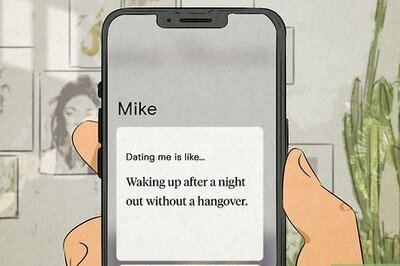
views
President-elect Joe Biden may speed up distribution of COVID-19 vaccines to U.S. states, a spokesman said on Friday, in an effort to jump-start the slow roll-out of inoculations that have made little impact on the pandemic one week into the new year.
Such a move by Biden when he takes office on Jan. 20 would be a departure from a Trump administration strategy to stockpile enough doses to ensure that required second doses of the vaccines are available.
It would also require that Pfizer Inc, partner BioNTech SE and Moderna Inc, makers of the first two coronavirus vaccines authorized by the government for use in the United States, are able to maintain a consistent supply so second shots could be administered on schedule.
“The President-elect believes we must accelerate distribution of the vaccine while continuing to ensure the Americans who need it most get it as soon as possible,” TJ Ducklo, a spokesman for Biden’s transition, told Reuters.
As of Friday, roughly 6.6 million people across the United States had received a first injection of the two-shot vaccines out of the 22 million doses shipped, according to the U.S. Centers for Disease Control and Prevention (CDC). Some Americans got their second doses this week.
That number falls far short of the 20 million vaccinations the Trump administration pledged to administer by the end of 2020 as the pandemic spirals out of control with still-mounting infections, hospitalizations and deaths.
“The goal has to be to get vaccine out of freezers and into people’s arms, and I do think that we should get first doses in and rely on the manufacturing process to deliver the second doses in time,” said Dr. Amesh Adalja, a senior scholar at The Johns Hopkins Center for Health Security.
“I would also add that the issue is less about supply but about being able to actually physically administer the vaccine, so this needs to be coupled with the ability to stage vaccination clinics, mass vaccination sites, and train vaccinators,” Adalja said.
CALIFORNIA RAMPS UP VACCINATIONS
The lag has been partly attributed to strict rules by U.S. states controlling who should get inoculated first. Those plans have been complicated by some healthcare workers at the front of the line declining the shots, leaving the doses unused.
The CDC has said healthcare workers and nursing home residents and staff should have priority for the limited supply of vaccines. On Friday, the agency softened that guidance, recommending that states move to those next on the list: People over age 75 and so called “essential” workers.
Most Americans have been told they will wait months for a vaccine.
California Governor Gavin Newsom said on Friday he had given local officials more flexibility in administering vaccinations, allowing them to jump between the different “tiers” of people who qualify under the state’s rules.
“We have a specific goal of a million vaccinations in the next 10 days,” Newsom told a briefing.
New York Governor Andrew Cuomo, who previously said all healthcare workers should be inoculated before the state moved on to other categories, changed course on Friday, saying people aged 75 and over could receive the shot starting next week.
New York has recorded 38,119 COVID-19 deaths, far more than any other U.S. state.
In Texas, Florida and Georgia, which are among some dozen states that have either begun or will soon start inoculating vulnerable elderly, people over 65 are eligible for a shot. West Virginia and Indiana are so far limiting the vaccine to those over 80.
West Virginia leads the country in the pace of first-dose inoculations, having administered 59% of its allotted vaccine supply, according to CDC data.
Despite strict lockdowns and mandatory business closures by state and local officials, the pandemic has shown no sign of retreat this week, killing more than 4,000 people nationwide for the second consecutive day on Thursday.
The latest COVID-19 surge has been compounded by the spread of a new, more infectious coronavirus variant first detected in the United Kingdom that has now been found in at least eight U.S. states.
More than 132,000 Americans were hospitalized due to the coronavirus as of late Thursday night. The total number of U.S. cases since the pandemic began rose to 21.5 million.
Disclaimer: This post has been auto-published from an agency feed without any modifications to the text and has not been reviewed by an editor
Read all the Latest News, Breaking News and Coronavirus News here


















Comments
0 comment